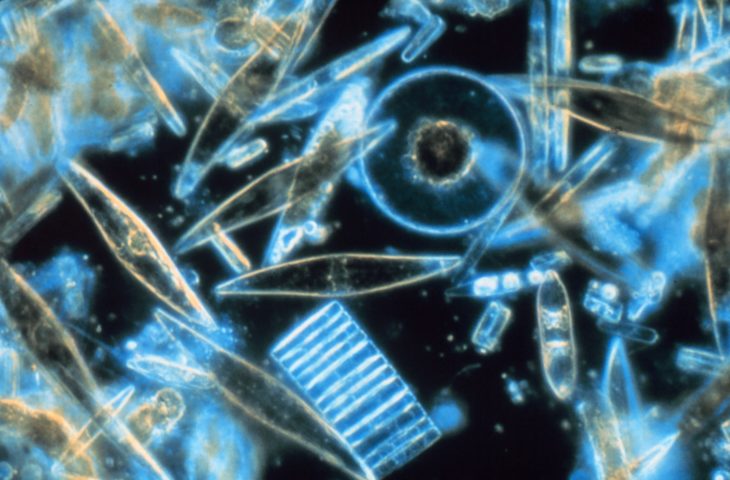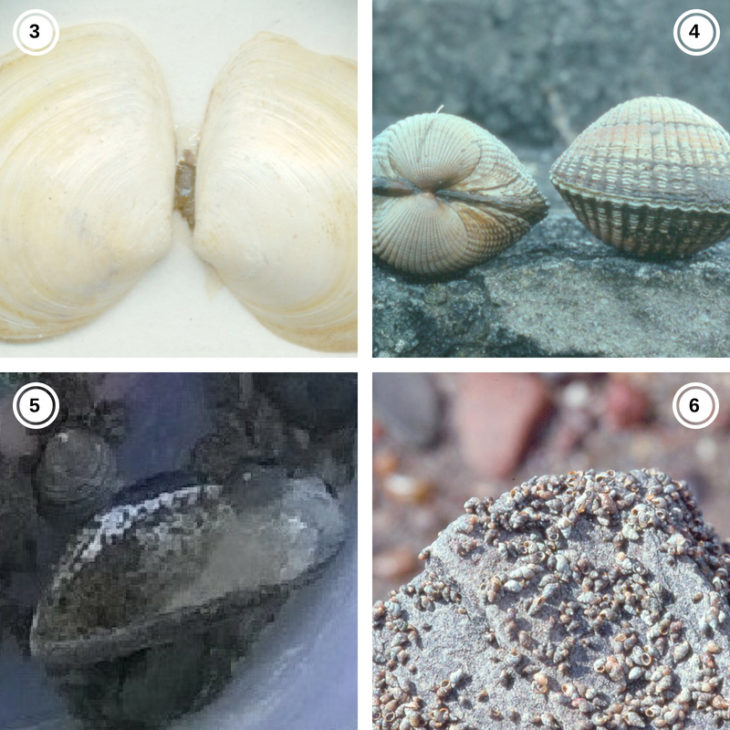What Lies Beneath…
Estuaries are truly special places and Montrose Basin is no exception. The mixing of North Sea salt water and fresh water of the River South Esk in this unusual enclosed estuary has created a fantastic ecosystem. Although tens of thousands of birds inhabit Montrose Basin throughout the year, most of the animal life is hidden from sight. Beneath the surface of the mud flats lies a busy world where smaller, but no less important, forms of life thrive.
Estuaries are one of the most productive environments on Earth. They are 20 times more productive than the open sea and extremely rich in organic matter and nutrients. A mixture of very fine silts from tidal waters and alluvium from rivers dropping their load as they reach the sea is deposited, causing a build-up of mud layers, referred to as mud flats. Mud flats are typically found in areas where the tidal waters flow slowly. Mud flats are covered at high tide and exposed as the tide drops. At low tide the intertidal mud is exposed as a mud flat leaving water only in permanent channels. At high tide the mud flats are covered by salt and brackish water.
In the mud flats of Montrose Basin, microorganisms are hard at work converting waste matter into nutrients, ammonia, nitrates and phosphates, which becomes the basic food for primary consumers such as crustaceans, molluscs and marine worms.

Worms are creatures that probably don’t cross your mind until you happen upon them whilst digging in your garden. The worms in the mud of Montrose Basin are not your everyday garden variety earthworms. From a class of animals known as polychaetes, they’re far more alien in appearance, many with bristles and appendages which help them move through the dense sediment. The only giveaway to their presence is the squiggly sand deposits on the surface of the mud known as casts (Picture 1). Perhaps the most common species is the Estuary Ragworm (Hediste diversicolor). It’s a small ragworm, easily identified by its conspicuous red dorsal blood vessel and lives in a vertical burrow in the mud. It can feed in a variety of ways, by filter feeding through a mucus ‘web’, gulping down sediment, eating algae or by munching small invertebrates!
The most spectacular (and scary looking) of the ragworms is the aptly named King Ragworm (Nereis virens). This is a very large and colourful worm which can reach almost a metre in length.
Lugworm (Picture 2) are thicker, more cylindrical shaped worms which have two distinct sections. The ‘head’ end is thicker and is covered in bristles known as chaetae. The ‘tail’ end or last thirteen segments has feathery gills. The two most recognisable species are known as blow lug (Arenicola marina) and black lug (Arenicola defodiens). A simple way to tell these species apart is black lug create neatly coiled casts, whereas blow lug casts are an untidy mess!
All of these worm species form an important part of the diet of many of Montrose Basin’s estuarine birds and fishes.

Molluscs are also vital members of the mud flat ecosystem and an integral food source for wading birds and crustaceans.
The molluscs at Montrose Basin come in all shapes, sizes and colours and are adapted from the range of habitats found. Tellin (Picture 3) are compressed bivalves, usually found in shades of dainty pinks and peaches. They prefer to burrow in the sand and use their long feet with two long siphons to feed on detritus. Cockles (Picture 4) can be found buried in the mud about 2 – 3 cm deep where they filter feed on microscopic plankton in the water column. They generally prefer to stay put, but will happily move to more favourable habitats if required. Cockles are a valuable indicator of environmental health as they accumulate any toxins present in the water and sediment. Mussels (Picture 5) can be found attached to hard surfaces, such as rocks or man-made objects, in the basin using very elastic thread like structures. They often form large clumps of individuals and are a favourite food of Eider ducks. One of the smaller molluscs you might encounter at Montrose Basin, are the Hydrobid snails. Only a few of millimetres in length, these brackish snails are found on exposed rocks feeding on detritus and seaweed.

Rachel Mackay-Austin
Teacher Naturalist / Director at RiverWood Ecology Ltd.
Help protect Scotland’s wildlife
Our work to save Scotland’s wildlife is made possible thanks to the generosity of our members and supporters.
Join today from just £3 a month to help protect the species you love.
Preface
?Estuaries are truly special places and Montrose Basin is no exception. The mixing of North Sea salt water and fresh water of the River South Esk in this unusual enclosed …
